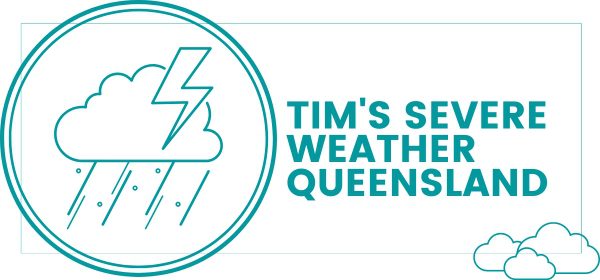Table of Contents
Cyclone Tracy struck Darwin on Christmas Day 1974, leaving behind a trail of destruction. 71 people lost their lives, and the city was largely destroyed. This disaster reshaped Australia’s way of dealing with natural disasters. Tracy’s winds reached deadly speeds, pushing sea levels up by 1.6 meters in Darwin’s harbour.
On top of that, it poured 255 mm of rain in just twelve hours. The destruction was so severe that 70% of Darwin’s homes could not be lived in anymore. The damage cost was an enormous $800 million, judged by 1974’s money value.
The cyclone’s aftermath tested Australia’s strength and ability to rebuild. The Darwin Reconstruction Commission was set up and amazed everyone by rebuilding the city in just over three years.
This was much quicker than the planned five years. Today, stricter building rules are one of the key outcomes of Cyclone Tracy.
These changes made sure disasters like Tracy’s would cause less damage in the future. This event didn’t just change Darwin; it changed how Australia responds to natural disasters and builds its buildings.
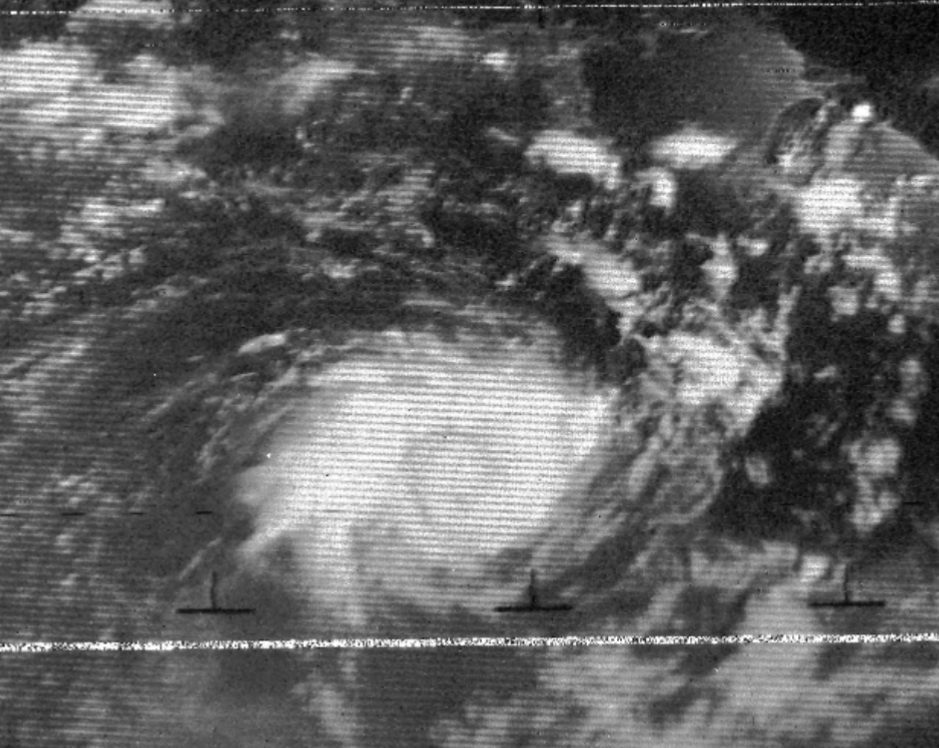
Cyclone Tracy satellite image
Key Takeaways
- Cyclone Tracy was a defining moment in the Australian natural disaster response and recovery.
- The devastation led to the overhaul of building codes, strengthening structural resistance to cyclones.
- Darwin’s infrastructure was swiftly and efficiently rebuilt, thanks to the Darwin Reconstruction Commission.
- The cyclone’s impact underscored the need for improved emergency services and disaster preparedness.
- Building code changes following Tracy have since saved lives, as demonstrated in subsequent cyclones with no casualties.
- Tracy is a stark reminder of the unpredictable power of nature and the importance of stringent urban planning in cyclone-prone regions.
10 Facts and Stats About Cyclone Tracy
- Cyclone Tracy was a destructive tropical cyclone that struck the city of Darwin, Australia.
- It occurred on Christmas Day in 1974 and is considered one of the most devastating tropical cyclones in Australian history.
- Cyclone Tracy caused widespread destruction, with most buildings in Darwin being severely damaged or destroyed.
- The cyclone resulted in the tragic loss of 71 lives and left many others injured or homeless.
- In the aftermath of Cyclone Tracy, significant efforts were made to rebuild and strengthen Darwin’s infrastructure to withstand future cyclones.
- Cyclone Tracy struck Darwin, Australia on December 25, 1974, with wind speeds reaching up to 217 kilometres per hour.
- The cyclone caused the evacuation of approximately 30,000 residents in Darwin.
- Over 70% of buildings in Darwin were destroyed or severely damaged by the cyclone.
- The estimated cost of the damage caused by Cyclone Tracy was approximately $837 million (in 1974 Australian dollars).
Where Is Darwin?
Chronology of Cyclone Tracy
From 21st to 26th December 1974, The residents of Darwin faced a critical time with Cyclone Tracy. It’s a key weather event in Australia’s history. Starting as a tropical depression in the Arafura Sea, it grew into a severe Category 4 tropical cyclone. The impact was huge on Darwin, Northern Territory.
- Initial Formation: Spotted in the Arafura Sea on 20th December 1974.
- Intensification: By 21st December, it became a notable 1974 cyclone, reaching Category 4. It had winds of 175 km/h (110 mph).
- Landfall: On Christmas Day 1974, the pressure fell to 950 hPa. That’s when Cyclone Tracy hit land.
Winds hit speeds up to 217 km/h, causing massive damage. More than 70% of Darwin was ruined, including about 80% of homes. This left over 25,000 of the 47,000 residents without homes. Consequently, more than 30,000 people had to leave the area.
- Financial Impact: The damage cost reached $645 million USD in 1974. That’s US$5.2 billion today.
- Human Cost: Unfortunately, 66 people died. The storm surge and rainfall made things even worse.
- Rebuild and Recovery: In February 1975, the creation of the Darwin Reconstruction Commission began the recovery. This set new benchmarks in resilience, planning, and construction.
“The might of cyclone Tracy timeline lives in our memory. It highlights the destruction of 1974. It teaches us about strong city planning and community unity.”
Darwin had faced cyclones before, like in 1897 and 1937. But Tracy’s aftermath sparked unmatched changes. Building codes were improved. Disaster planning changed, shaping urban Australian landscapes for the better.
As one of the smallest tropical cyclones recorded, Tracy’s impact is deep. It shows the need for better understanding and preparation for weather events. This commitment to safety and community strength lets Darwin stand strong today. It’s now a key link to Asia.
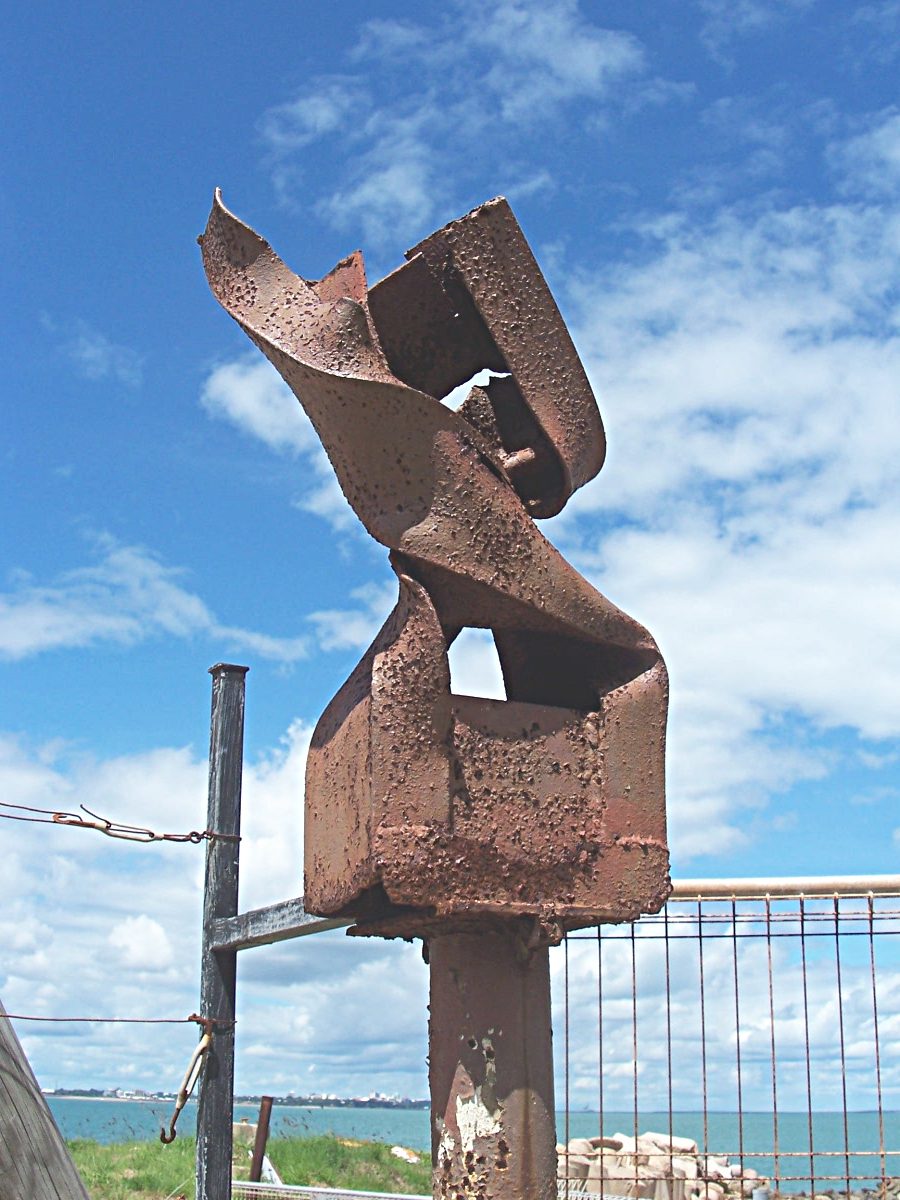
The base of a steel electricity pole bent by Tracy – By Billbeee at English Wikipedia, CC BY 2.5, https://commons.wikimedia.org/w/index.php?curid=4022422
Timeline Of Cyclone Tracy
December 22, 1974
- 4:00 AM: Cyclone Tracy forms over the Arafura Sea.
- 6:00 PM: Tracy intensifies into a Category 3 cyclone.
December 23, 1974
- 6:00 AM: Tracy reaches Category 4 strength.
- 7:00 PM: Cyclone Tracy crosses the northern coast of Australia near Darwin as a Category 4 cyclone.
December 24, 1974
- 12:00 AM: Tracy weakens to a Category 2 cyclone.
- 6:00 AM: Tracy moves inland over the Northern Territory.
- 12:00 PM: Tracy weakens to a Category 1 cyclone.
December 25, 1974
- 6:00 AM: Tracy dissipates over land.
December 25, 1974 – January 1, 1975
- Recovery Efforts: Immediate rescue and relief operations begin in Darwin.
January 5, 1975
- End of Emergency: Emergency declared over, focus shifts to rebuilding.
February – March, 1975
- Reconstruction: Rebuilding efforts begin in earnest, with many residents relocating to other parts of Australia.
Present
- Legacy: Cyclone Tracy remains one of Australia’s worst natural disasters, prompting significant changes in building codes and disaster preparedness.
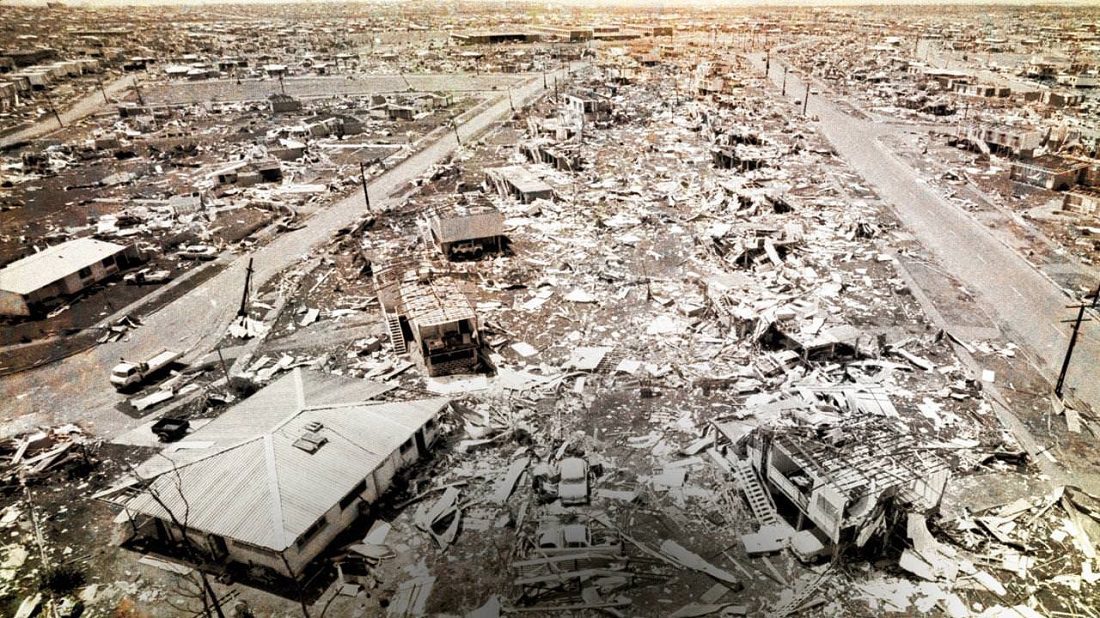
The Historical Context of Cyclone Tracy
Cyclone Tracy stands out in Australian cyclone history. It wasn’t just another storm hitting the Northern Territory. The devastation it brought was immense. What set Tracy apart was how it changed emergency responses and building policies.
Historical Cyclone Seasons in Australia
- 1910-1919: Several destructive cyclones, including one in Broome in 1910 killing 40 people, and one in Mackay in 1918 causing 30 deaths in Mackay and more in outlying areas.
- 1960s: Notable cyclones included Severe Tropical Cyclone Ada in January 1969 and Tropical Cyclone Bessie in January 1964.
- 1970s-2020: Includes major storms like Cyclone Tracy in 1974-75, which killed over 70 people and caused significant damage.
- 2018-2020: Several violent cyclones hit Australia, including some of the most severe storms between 2018 and 2020, with details on their wind speeds, diameters, air pressure levels, and affected regions.
- 2023-24: Notable storms include Severe Tropical Cyclone Jasper, which brought record-breaking rainfall and $1 billion in damages to northern Queensland in December 2023.
🌐 Sources
- wikipedia.org – 1910s Australian region cyclone seasons
- worlddata.info – Most recent cyclones in Australia
- wikipedia.org – 1960s Australian region cyclone seasons
- wikipedia.org – Australian region tropical cyclone
- worlddata.info – Most recent cyclones in Australia
- wikipedia.org – 2023–24 Australian region cyclone season
Cyclone Tracy Track Map & Data
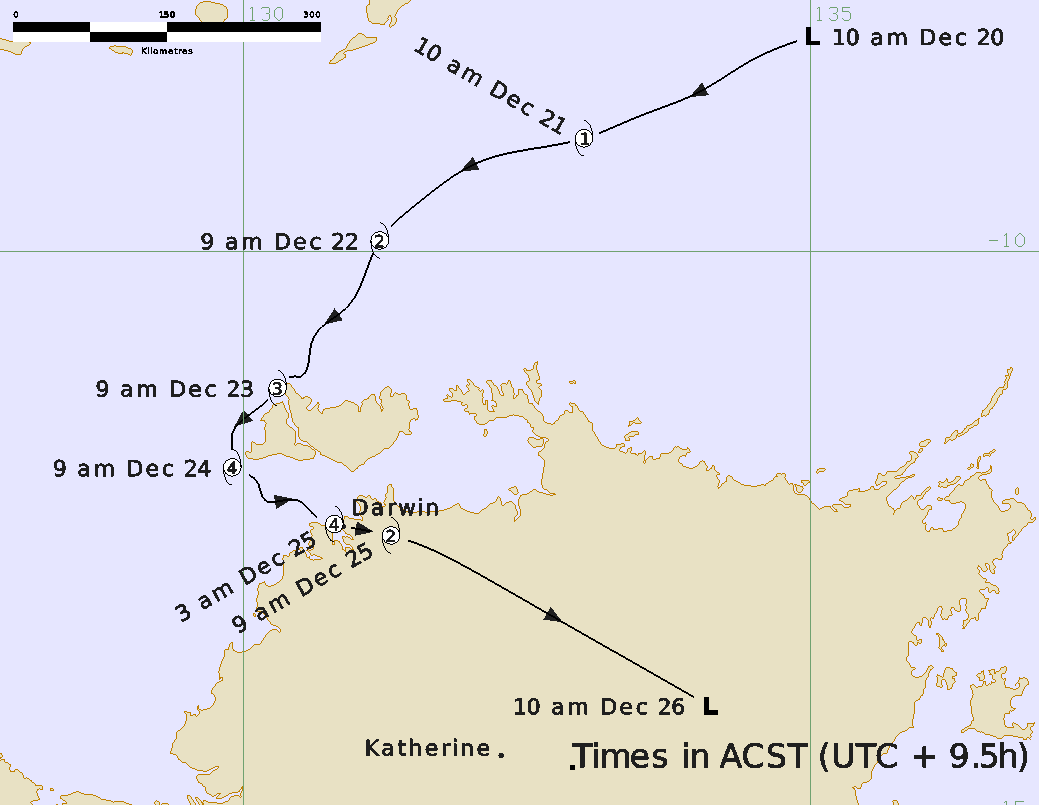
Image source: Bureau of Meteorology
Previous Cyclone Incidents In Northern Territory Before Tracy
- 1897: A cyclone hit Darwin, causing significant damage.
- 1937: Another cyclone struck Darwin, causing extensive damage and flooding.
- Cyclone Mahina (1899): This cyclone is known for causing the deadliest natural disaster in Australian history, with a storm surge that killed over 400 people in Bathurst Bay, Queensland, and the Percy Isles, Queensland. While it primarily affected Queensland, its impacts were felt across the northern coast, including the Northern Territory.
🌐 Sources
Pre-Tracy Meteorological Conditions
Before Cyclone Tracy struck Darwin, Australia, on December 24, 1974, the meteorological conditions were conducive to its formation and intensification. The cyclone developed from a monsoon trough over the Arafura Sea and Gulf of Carpentaria, typical for the region during the wet season. Warm sea surface temperatures, high atmospheric moisture, and low vertical wind shear provided an environment for the cyclone to strengthen. Additionally, the presence of the Madden-Julian Oscillation, a pattern of increased thunderstorm activity, contributed to the cyclone’s development.
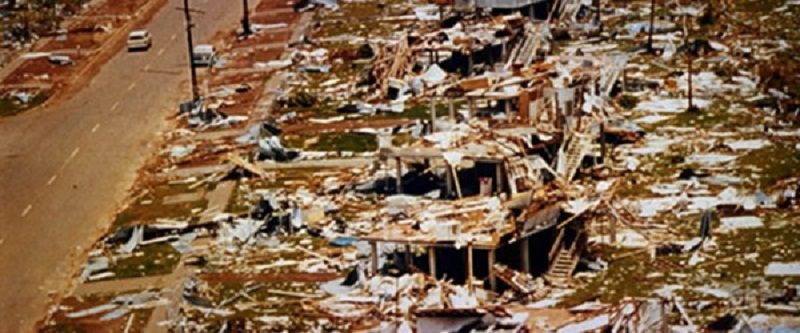
Darwin wasn’t ready for what was coming. The storm’s impact was much bigger than anyone thought it would be. This showed the need to get better at forecasting storms and preparing for them in Australia.
Weather Patterns Leading Up to Cyclone Tracy
Before Tracy hit, the signs were worrying. It started as a depression in the Arafura Sea on December 20, 1974. It quickly got stronger, and by Christmas Eve, it was a Category 4 cyclone. Winds reached 175 km/h (110 mph), hinting at the disaster that was about to happen.
The Role of the Weather Bureau in Darwin
The weather bureau in Darwin watched Tracy closely but faced big obstacles. The technology back then wasn’t good at predicting such a fierce cyclone. And, spreading the word about the danger wasn’t effective enough. Even the anemometer at Darwin Airport broke after recording winds of 217 km/h (135 mph). This showed how unprepared they were for the disaster that hit.
The damage from Cyclone Tracy was unbelievable. It caused about $837 million AUD in damage in 1974, which is about $7.69 billion USD in 2022. Over 70% of Darwin’s buildings were destroyed, including 80% of the homes. This left more than 25,000 of the 47,000 residents without homes and led to over 30,000 people being evacuated.
These events uncovered big problems in how we predict and get ready for storms. The destruction and sadness from Cyclone Tracy changed how the Australian Weather Bureau and people prepare for big weather threats in the future.
Devastation in Darwin: Cyclone Tracy’s Impact
Cyclone Tracy in December 1974 left a deep mark on Australia. This disastrous event showed the extreme effects of Mother Nature. It changed Darwin and impacted the whole country’s approach to emergencies.
What Happened When Cyclone Tracy Struck Darwin?
When Cyclone Tracy hit Darwin, its power was unmatched. Winds reached up to 217 km/h before equipment broke. The result was chaos – 80% of the city was destroyed, with 70% of homes badly damaged.
Tracy also brought heavy rains, with 255 mm falling in 12 hours. This caused floods all over. More than half of Darwin’s residents lost their homes. This led to over 30,000 people being evacuated.
WE’D HAD A CYCLONE WARNING ONLY 10 DAYS BEFORE TRACY [THAT ANOTHER CYCLONE] WAS COMING, IT WAS COMING, AND IT NEVER CAME. SO WHEN WE STARTED HEARING ABOUT TRACY, WE WERE ALL A LITTLE BLASÉ.
Another citizen, Barbara Langkrens, stated:
AND YOU STARTED TO ALMOST THINK THAT IT WOULD NEVER HAPPEN TO DARWIN EVEN THOUGH WE HAD CYCLONE WARNINGS ON THE RADIO ALL THE TIME … MOST OF THE PEOPLE WHO HAD LIVED HERE FOR QUITE SOME TIME DIDN’T REALLY BELIEVE THE WARNINGS.
(Bunbury, p. 21)
Rare Actual Recording Of The Sound Inside Of Cyclone Tracy Storm
Emergency Responses and Immediate Evacuation Measures
The response to the disaster was massive. Over 36,000 people were evacuated as Darwin faced this crisis. Teams of rescuers and medics helped the injured and dealt with the tragedy of 71 lives lost.
Australia began a huge relief effort, making it a major peacetime evacuation. By February 1975, the Darwin Reconstruction Commission started rebuilding. They rebuilt the city in just three years, showing Australia’s strong spirit.
Afterwards, Australia improved its building codes to prevent such damage again. These new rules were effective. When Cyclones Larry and Yasi hit, despite being strong, no lives were lost. It was a tribute to the lessons learned from Cyclone Tracy.
Cyclone Tracy’s Aftermath
The destruction caused by Cyclone Tracy marked a dark chapter in Australian history. This event led to loss of life, injuries, and massive damage. It deeply affected efforts to rebuild.
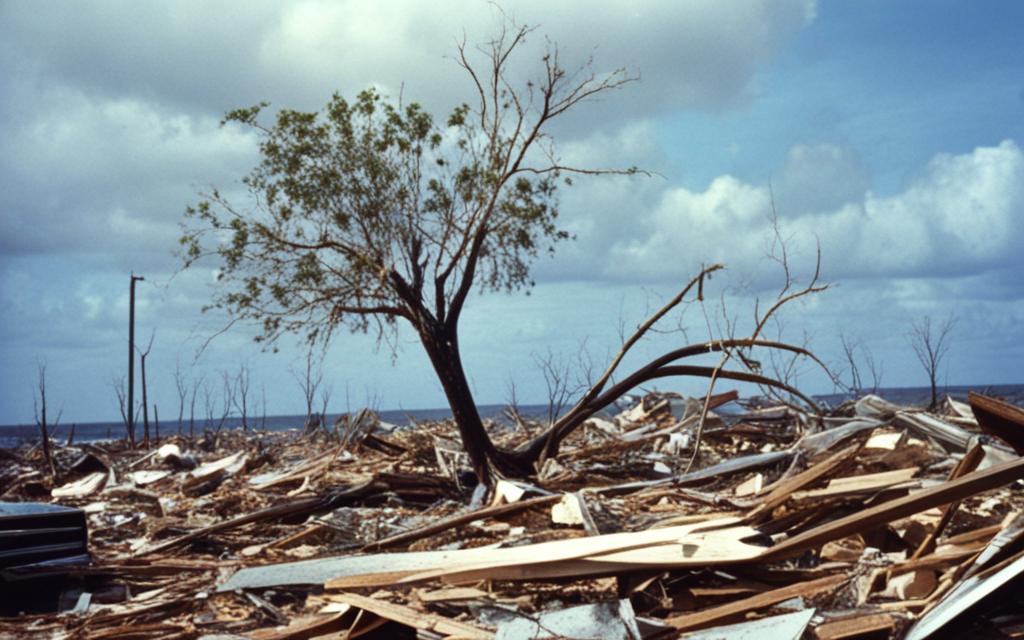
Human Tragedy: Casualties and Survivor Stories
After Cyclone Tracy, Australia mourned the death of 71 people. The community in Darwin changed forever. Survivors shared stories of fear during the devastating event.
Some told how they hid under tables or amidst the ruins of their homes. Their stories highlight their courage and strong will.
Assessing the Damage: Infrastructure and Economic Loss
The cyclone left Darwin in shambles. An $800 million cost was estimated for 1974. Seventy per cent of homes were badly damaged.
The effort to rebuild was huge. Workers from many sectors came together. They aimed to fix the destruction and plan the city’s future.
“DARWIN HAD, FOR THE TIME BEING, CEASED TO EXIST AS A CITY”.
Short-term and Long-term Consequences on the Environment
The storm’s impact went beyond buildings. Casuarina Beach faced a huge storm surge. And a lot of rain fell in just 12 hours.
These conditions changed the land. They led to discussions on how to be ready for climate change and protect the environment.
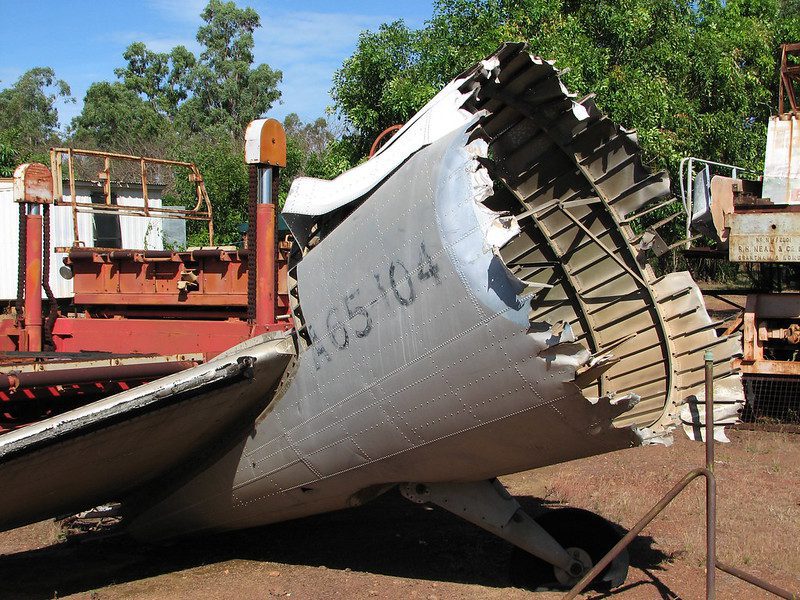
The remains of raaf dakota a65-104, which was destroyed in cyclone tracy. A65-104 was the aircraft that took 5acs members for those first flights from the newly completed 11/29 airstrip in 1959.
The Cultural and Psychological Aftermath of Cyclone Tracy
Cyclone Tracy affected Australia’s spirit. It brought support and a big shock to everyone. The experience changed how Australians handle disasters together.
The Darwin Reconstruction Commission was set up after. It reflects a new understanding of staying strong as a community.
- 71 people were killed on Christmas Day 1974
- 145 seriously injured, and over 500 with minor injuries
- 36,000 people evacuated from Darwin
- Over two-thirds of homes suffered severe damage
- Within three years, the Darwin Reconstruction Commission accomplished the city’s rebuilding
- Introduction of stronger building codes across Australia
The Reconstruction Efforts Post-Tracy
Cyclone Tracy left Darwin in ruins, calling for a huge effort to rebuild the city. The damage cost millions and destroyed most places. More than two-thirds of the 45,000 people living there had to leave. With only 10,500 people left, the need to rebuild quickly was crucial.
Establishment of the Darwin Reconstruction Commission
After the cyclone, the Commonwealth set up the Darwin Reconstruction Commission. This move showed the nation’s support. It aimed to rebuild in five years but did it in less than three.
In 1978, the Northern Territory gained self-government, a big step in the recovery process. This move helped the region not just rebuild, but also grow independently.
Rebuilding Strategies and the Resilience of Darwin’s Communities
Rebuilding Darwin was about more than just fixing buildings. It meant bringing the community back together. Almost every home was unlivable, leaving about 40,000 people without homes. The people showed amazing strength.
Engineers played a key role in rebuilding stronger homes. Homes built with engineers’ help did much better when cyclones hit. This led to much stronger building practices and better emergency plans. Everyone was better prepared for future storms.
Even though there were issues at first, like plans not being followed properly, Darwin’s people showed they could lead recovery efforts. Their strength was a big part of getting through the disaster.
Darwin’s recovery was about more than fixing things. It showed the world how to overcome disaster with strong community spirit.
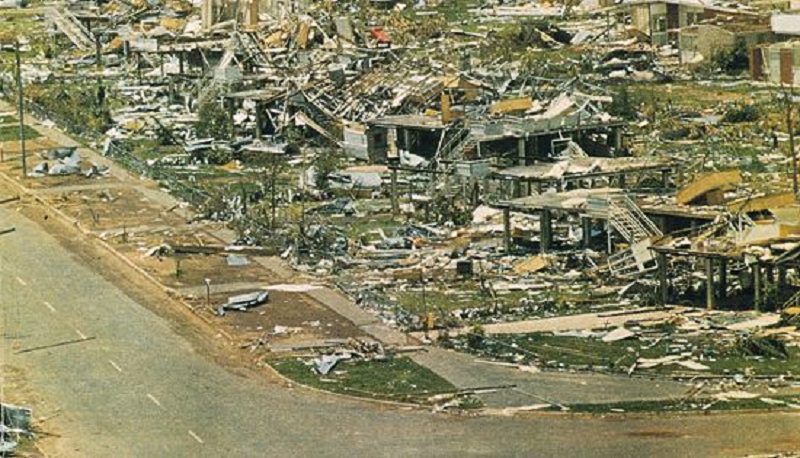
Legacies and Learnings: Cyclone Tracy’s Influence on Australian Policies
On Christmas morning of 1974, Cyclone Tracy hit Darwin as a Category 4 storm. It caused the death of 71 people and injured 650 more. It also forced a major shift in Australia’s disaster recovery and resilience strategies. The tragic event, where 94% of homes were left uninhabitable, led to big changes.
About 40,000 people in Darwin became homeless after the cyclone. This led to 80% of the city being evacuated. The damage was clear: 60% of homes were beyond repair and only 6% could be lived in. This showed that the building codes needed urgent updating. The cost of the damage was huge, between $2 billion and $4 billion in today’s money.
Research after Cyclone Tracy showed housing changes reduced possible damage by 85% for future cyclones. Darwin’s people became more aware and ready. They learned a lot about cyclones, almost as much as the experts.
Buildings designed with engineering insights fared much better than those without. This led to new engineering-based housing designs.
Looking back, managing Cyclone Tracy had success and failure. The warning system worked well, but some emergency plans were ignored. These lessons improved Australian policies for dealing with disasters. They also led to better urban development strategies.
- New building codes were adopted based on engineering insights.
- People became more aware and prepared, especially those living there for a long time.
- Future cyclones would likely cause less damage to homes.
The legacy of Cyclone Tracy is still felt today. It’s more than a historical event; it sparked big changes in disaster management and construction in Australia. Thanks to these hard lessons, Darwin and Australia are stronger and better prepared for nature’s challenges.
THE DESTRUCTION OF THE CITY WAS SO SEVERE THAT SOME SUPPORTED MOVING THE ENTIRE TOWN.
Advancements in Cyclone Preparedness and Building Codes
After Cyclone Tracy hit, Australia changed how it prepares for severe weather. Now, we have better technology for tropical cyclone forecasting. These advances let us warn people more accurately about dangerous weather. Even though only 5% of Australians live in Northern Australia, this area faces about 20% of the country’s disaster insurance costs. This fact shows just how at risk the region is.
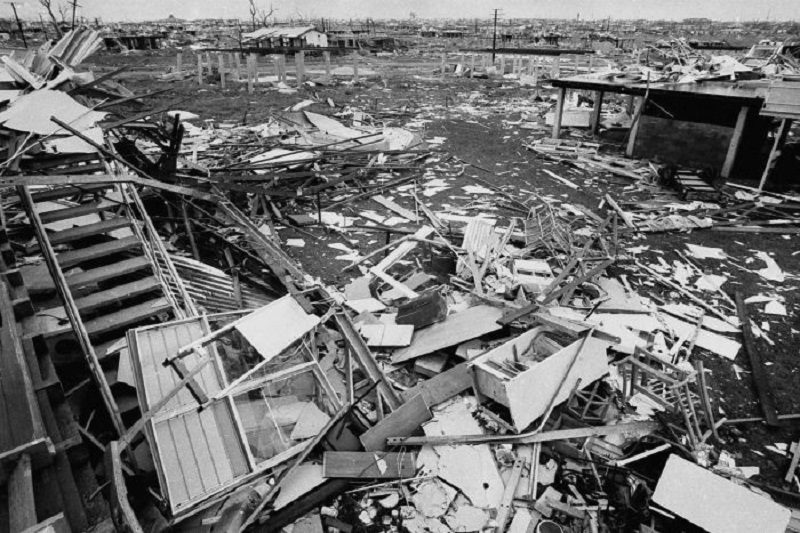
Technological and Methodological Changes in Weather Forecasting
Since Cyclone Tracy, our forecasting tools have gotten a lot better. We now use data analytics to predict weather patterns more accurately. This means we can give people earlier warnings, helping them stay safe. Insurance costs have also gone up. Now, for every dollar received in premiums, insurers pay out $1.40 in claims over eight years. This shows the financial importance of being prepared for cyclones.
New Standards in Building Construction Post-Tracy
Building codes have been updated to prevent damage from severe weather. Now, 95% of homeowners are insured, partly thanks to programs like Suncorp’s Cyclone Resilience Benefit. This program has lowered premiums for over 35,000 people in northern Australia. By sticking to these new building standards and offering different insurance products, companies like Suncorp are helping communities. They ensure that after disasters like Cyclone Debbie, which caused over $1.5 billion in losses, we can recover faster and stronger.
Notable Survivors of Cyclone Tracy
- Grahame Stewart, Beth, Tim West, Liz Elaine, Sonia and Louise Ball, John King, Sue Casey, Paul Bayetto, Robyn Mackenzie, Cathryn Doney, Kathy Shepherd, Graeme Gilder, Sean Kennedy, and Tracey Collins – Their stories describe their experiences during the night of the devastating cyclone that struck Darwin on Christmas Eve in 1974, such as hiding from the intense winds, witnessing the destruction after the storm passed, and being evacuated from the city in the aftermath. Read more: Survivor stories
- Joan Allridge – The Vice President of the Red Cross in Darwin at the time, who spent the hours of the cyclone under her kitchen table with two other adults, six children, one cat, four kittens, one dog, and three birds. source
- Gai Chaney – Lost her infant son Paul during the cyclone and still experiences PTSD from the event decades later, especially around Christmas time.
- Robyn Cooper-Radke – Helped found a Facebook group for survivors to share their ongoing struggles and has been diagnosed with complex PTSD.
- John Browne – Still traumatized by the event and discussed how his family is still affected by the trauma.
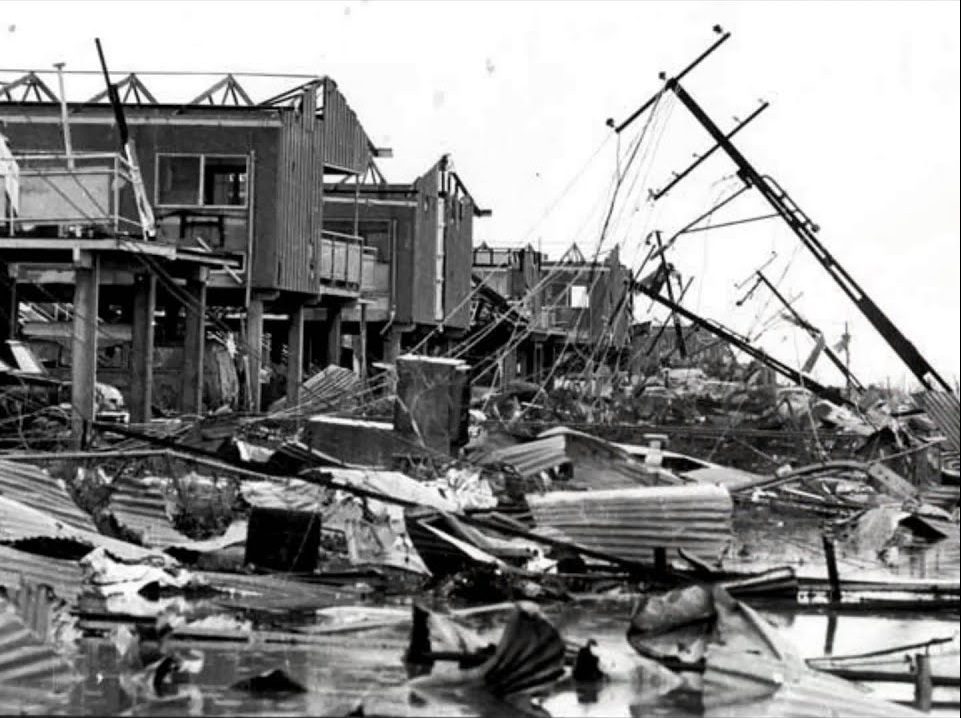
FAQ
- What was the wind speed during Cyclone Tracy?
- The wind speed during Cyclone Tracy was recorded to be up to 240 km/h (150 mph).
- What measures were taken to prepare for Cyclone Tracy?
- Various measures were taken to prepare for Cyclone Tracy, including:
- Evacuation of residents from low-lying areas.
- Securing loose objects and buildings.
- Stockpiling essential supplies.
- Various measures were taken to prepare for Cyclone Tracy, including:
- Was there a warning system in place before Cyclone Tracy struck?
- Yes, there was a warning system in place before Cyclone Tracy struck, but it was not as advanced as modern warning systems.
- How strong was Cyclone Tracy?
- Cyclone Tracy was a Category 4 tropical cyclone, with wind speeds reaching up to 240 km/h (150 mph).
- How long did Cyclone Tracy last?
- Cyclone Tracy lasted for approximately 6 hours, making landfall on the night of December 24, 1974.
- How did people prepare for Cyclone Tracy?
- People prepared for Cyclone Tracy by:
- Boarding up windows and doors.
- Stockpiling food, water, and other essentials.
- Evacuating to safer areas if possible.
- People prepared for Cyclone Tracy by:
- How did Cyclone Tracy impact the environment?
- Cyclone Tracy caused widespread destruction to the environment, including uprooted trees, damaged vegetation, and altered landscapes.
- How does Cyclone Tracy compare to other cyclones?
- Cyclone Tracy is considered one of the most destructive cyclones in Australian history, causing widespread devastation to Darwin.
- Who was the Prime Minister during Cyclone Tracy?
- The Prime Minister of Australia during Cyclone Tracy was Gough Whitlam.
- Who was responsible for managing the aftermath of Cyclone Tracy?
- The responsibility for managing the aftermath of Cyclone Tracy fell to the Northern Territory Government and the Australian Government.
- Who provided emergency relief after Cyclone Tracy?
- Emergency relief after Cyclone Tracy was provided by various organizations, including the Red Cross and the Australian Defence Force.
- What were the wind speeds during Cyclone Tracy?
- The wind speeds during Cyclone Tracy were recorded to be up to 240 km/h (150 mph).
- Where can I find images of Cyclone Tracy?
- Images of Cyclone Tracy can be found in historical archives, news websites, and documentaries that cover the event.
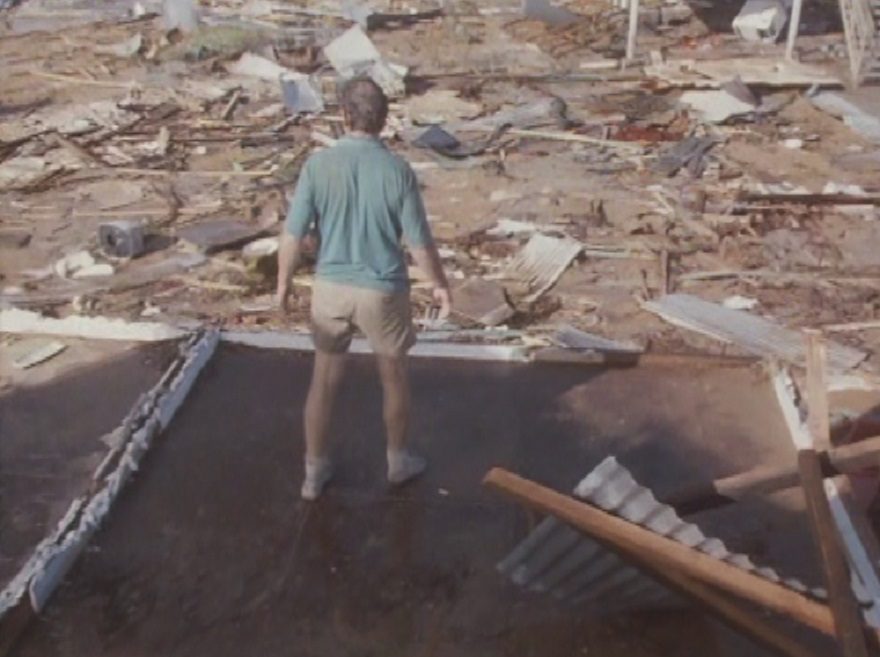
Source Links
- National Museum of Australia – Defining Moments: Cyclone Tracy
- AIDR – The Commonwealth Response to Cyclone Tracy: Implications for Future Disasters
- Wikipedia – Cyclone Tracy
- Bureau of Meteorology – Cyclone Tracy
- AIDR – Cyclone Tracy: Key Findings (PDF)
- James Cook University – Cyclone Tracy GRW Report 1975 Volume 1 (PDF)
- Australian Competition & Consumer Commission – Suncorp (PDF)
